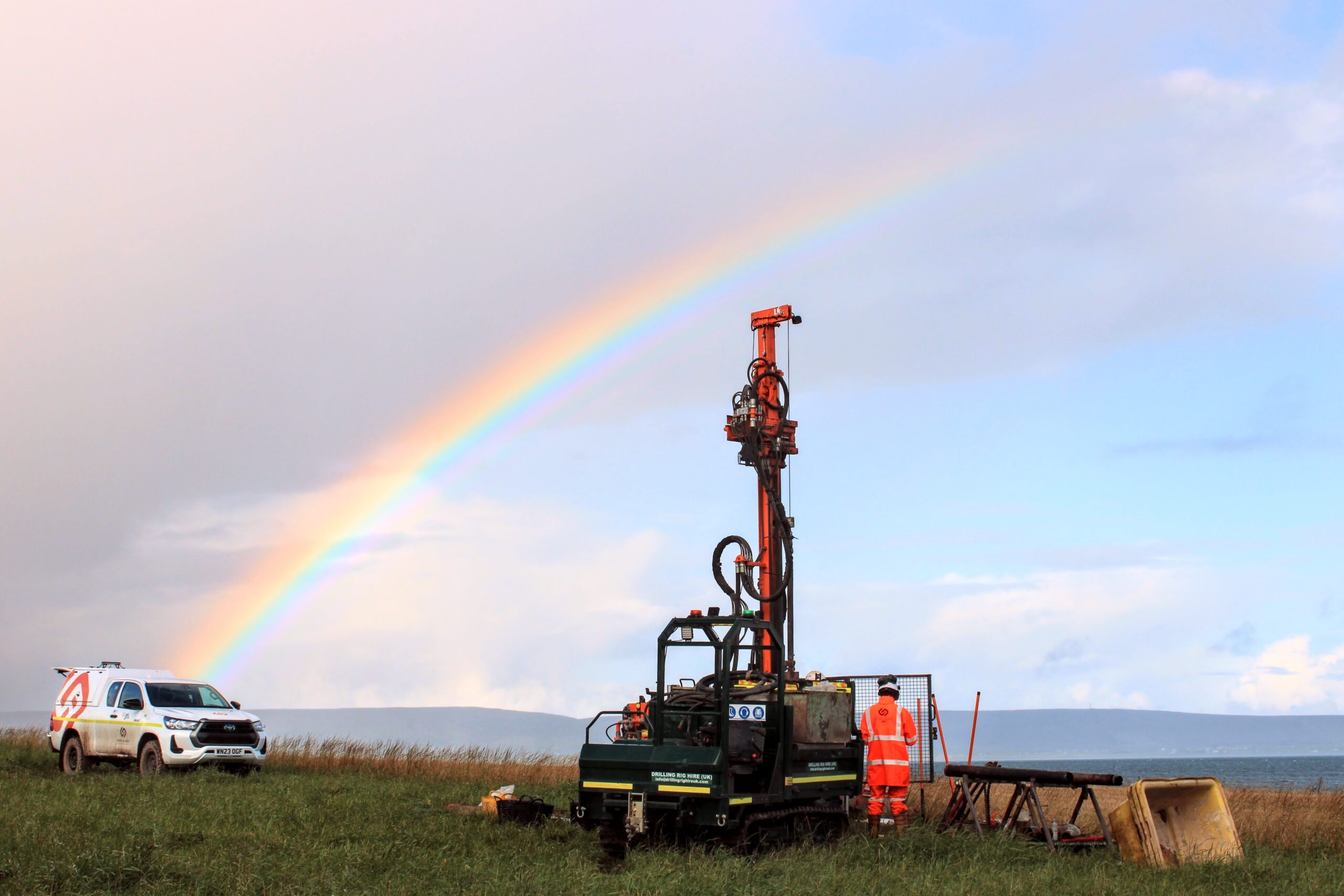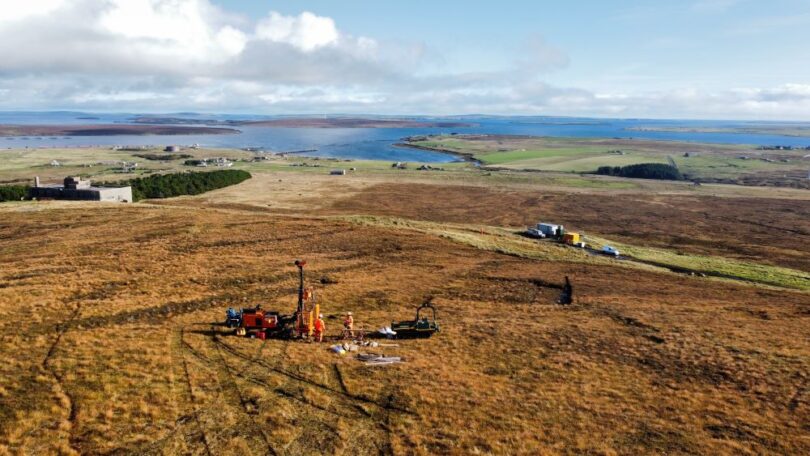Ground engineering and site investigation company Central Alliance is working with the Orkney Islands Council to carry out a ground investigation project that forms a crucial part of the council’s Orkney Community Wind Farms project.
Central Alliance Director Benjamin Swallow said this significant project, to help determine the design of wind turbine bases and associated wind farm infrastructure, began in October. It is expected to be completed at the end of January 2024, with the submission of detailed reports on the project’s findings.
Central Alliance, part of the RSK Group, also drew on the skills of fellow RSK companies Water Research Centre (peat probing), Ian Farmer Associates (geotechnical lab testing), Envirolab (environmental lab testing) and Drilling Supplies UK (drilling consumables).
Benjamin said: “Central Alliance has successfully completed what we would describe as a remote or difficult access ground investigation on the Orkney mainland (Quanterness) along with the island of Hoy. The project involved drilling boreholes, excavating trial pits, dynamic cone penetration testing and peat probing.
“The exploratory holes are required for the ground to be sampled, logged, described and photographed, with laboratory testing carried out to definitively categorise the subsurface materials both geotechnically and environmentally. The data we collect from this work will make an important contribution to wind farm infrastructure design, informing those decisions that will need to be taken to plan for and deliver this important community project.”
Because the investigation work took place on peatland, the Central Alliance team made use of low ground pressure bearing equipment and custom built a sledge to efficientlytransport drilling plant around site.

Benjamin added: “This work was not without its challenges due to access and inclement weather, but we had seven ground investigation team specialists on-site to carry out this work. We expect further challenges in the next phase of the work. This will involve the construction of exploratory holes on the uninhabited island of Faray. In order to access the island, we will be using boats and landing craft with programmes determined by optimum tidal and weather windows and local wildlife.”
Orkney Islands Council acting Strategic Projects Director Chris Purnell said: “Orkney has an abundance of wind. Exploiting this natural resource has the potential to bring huge financial benefit to our communities as well as contributing towards local and national net zero targets.
“Completing the groundwork investigations for Quanterness and Hoy helps us attain another major milestone in the development of Orkney Community Wind Farms.
“With insights gathered from these surveys, design engineers will have the necessary information available to make informed decisions for the site’s infrastructure including the roads, hardstandings, cable trenches and foundations that will be required as part of the development.
“We are looking forward to receiving the detailed reports from Central Alliance. This information is vital to the overall project and will feed into the final business model which will help us make an informed decision on whether to go ahead with the projects.”
Looking at the project by numbers, the team carried out the following work to comprehensively report on land conditions and to collect samples to inform an accurate assessment of the site.
Quanterness: eight boreholes to a maximum depth of 15m below ground level (bgl) with a total drilling meterage of 93m; 31 trial pits to a maximum depth of 4.5m bgl; 450 geotechnical/environmental samples; and 21 dynamic cone penetration tests. The rig utilised for borehole construction was a Fraste PL.G equipped with PWF size drilling system, and water was used as the flushing medium.
Island of Hoy: 12 boreholes to a maximum depth of 15m bgl with total meterage of 140m; 31 trial pits to a maximum depth of 4.5m bgl; 470 geotechnical/environmental samples; 21 dynamic cone penetration tests; and 24 peat probes. The drilling equipment was a Massenza MIP 3, which was used for its low ground pressure bearing capability, which is well suited to peat bogs. A PWF size drilling system was used, with water as the flushing medium.







